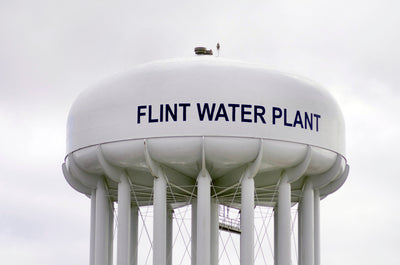Michigan to Pay Over $600 Million to Families in Flint
RSS
Updated November 17, 2021 to include recent news
Analies Dyjak, M.A. | Policy Nerd
A judge has approved a $626 million settlement for damages from the 2014 Flint Water Crisis. The State of Michigan is required to appropriate $600 million dollars of the total into a qualified settlement fund, which will be made available to children, residents, property owners, and businesses that were impacted by water distributed by the city. Almost 80% of the $600 million is being awarded to those who were children during the time of exposure.
Background Flint Water Crisis:
On April 25, 2014, the city of Flint switched its water supply from the Detroit Water and Sewerage Department (sourced from the Detroit River and Lake Huron), to the Flint River. Officials initially switched the water supply in an effort to cut costs. Flint city officials failed to add a proper corrosion control inhibitor to the new water source during treatment. This caused lead to leach from distribution pipes, and enter the municipal system at extremely elevated levels. According to the Centers for Disease Control, 99,000 people in Flint, Michigan were exposed to elevated levels of lead. Lead is a neurotoxin, and according to the American Academy of Pediatrics, there is NO safe level for children. Despite the current 15 part per billion Federal Action Level for lead, our team at Hydroviv follows the logic that children should not ingest any level of lead.
Financial Breakdown of $600 Million Flint Settlement:
-
79.5% - Minor Children Settlements Categories: 64.5% for ages 6, 10% for ages 7-11, and 5% for ages 12-17
-
18% - Adults and Property Damage Settlement Categories: 15% for adults and 3% for property damage
-
0.5% - Business Economic Loss Settlement Category
-
2% - Programmatic Relief Settlement Category
Important Details:
If the State fails to meet these conditions within 60 days, the Plaintiff’s are able to completely rescind the entire settlement. Also, in accordance with the settlement, individuals who were minors at the time of exposure are not required to show proof of injury in order to be eligible for compensation. This should help the State of Michigan get funds out to impacted parties in a timely manner. Additionally, individuals that were minors at the time of exposure may be eligible for larger amounts of compensation if they are able to show elevated blood lead levels. A similar eligibility requirement is true for those who were adults at the time of exposure.
A Few Red Flags:
The amount of compensation made available to each individual Flint resident is entirely dependent on how many people file claims. Therefore, there’s no way to estimate the amount of money each Flint resident will receive, or if it will be sufficient enough to address all expected damages. The settlement also claims that funding will be made available to provide special education services to children exposed to high lead levels Flint. No further details were provided about these special education services or how much funding will be allocated. It's unclear if portions, or all, of the individual financial compensation funds are expected to be used for at-home special education services.>
Our Take:
The recent settlement leaves us with more questions than answers regarding the tragic Flint Water Crisis. What happened between April 24, 2014 and December 31, 2016 demonstrates what can happen to under-served and underrepresented communities in the United States. In short, it shows the worst kind of government failure. We may never truly understand the full extent of these damages, and $600 Million dollars does not even begin to address the trauma and anxiety that Flint residents face every single day. We're proud to still be working with Little Miss Flint and the Little Miss Flint Clean Water Fund to continue our charitable efforts across the entire country.
Other Articles We Think You Might Enjoy:How Does Lead Enter Drinking Water?
What You Need to Know About Disinfection Byproducts in Tap Water
How Did Hydroviv Perform in a Duke University PFAS Removal Study?


